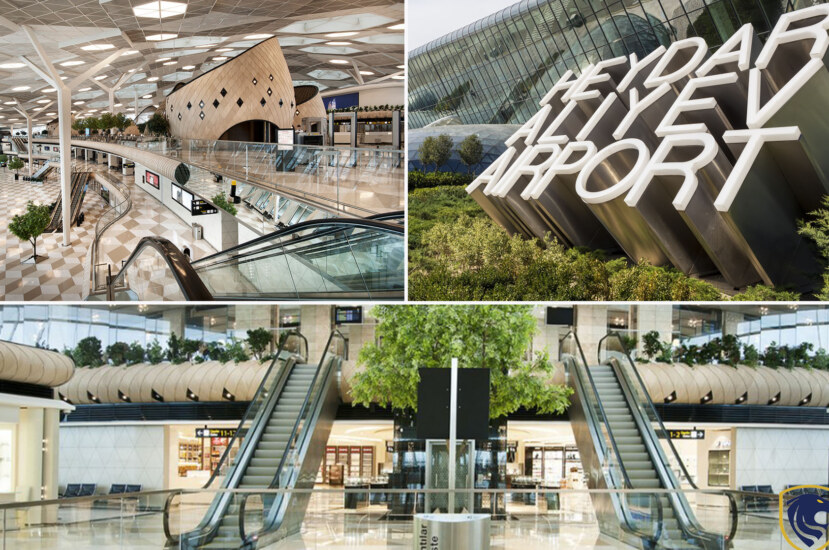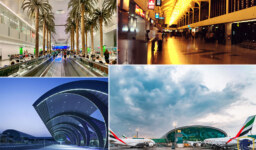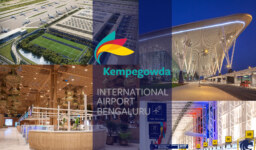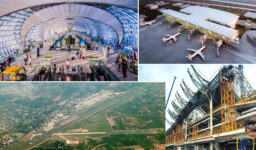The amenities, convenience, hygiene, merchandising, food & beverage options, and employee service at Baku Heydar Aliyev International Airport have earned it a 5-Star Regional Airport Certification.
“The two terminals of Baku Airport offer high-quality passenger service. Excellent interior design with fascinating features is delivered by Terminal 1. Also, more significantly, the customer experience through the airport is quick and easy. Low-budget airlines fly out of Terminal 2. Also, the airport’s heritage sector has a limited amount of domestic flights and foreign arrivals. This area’s amenities and design are appropriate for this market.
The sole international airport in the New Heydar Aliyev is situated northeast of Baku. Azerbaijan Airlines (AZAL) announced a significant growth project that would boost this capacity’s one million passenger limit by 150% in 2011.
An iconic new terminal of the Heydar Aliyev International Airport in Azerbaijan was created by the Autobahn company. This company is a business which is situated in Istanbul. overturning the beautiful settings and usual airport areas, they have chosen a tactile, organic experience with eye-catching and welcoming geometry. In particular, the airport forecourt is stunning. A 3D appearance is produced by equilateral triangles that are 1.5 meters on each side and come in three distinct colors. Cosentino’s Dekton, which comes in big slabs, is used to create the triangles. Because of its longevity and strength, Dekton was perfect for this active area. This material is also scratch- and stain-resistant. Moreover, it has a non-slip surface and is therefore perfect for outdoor applications.
Airport Star Rating levels

Airport Star Rating levels
If you don’t know about the airport star rating level I think it would be good if I elaborate more about this criteria. When talking about airports the star rating level is a significant fact. Up to 800 client-facing airport products and services receive ratings from 1-Star to 5-Star from Skytrax. These scores cover 30 various customer interaction points. They vary from the airport website to the standard of the terminal hotels. The industry-wide assessment process is uniform and consistent. Also, all airports from the busiest hubs to tiny regional hubs are evaluated according to the same fundamental standards. Ratings are based on how a client feels when traveling through an airport from beginning to end. Moreover, After an airport audit is finished or our audit team has obtained enough information to carry out a thorough airport evaluation, final ratings are applied.
The airport website, navigation, terminal design, and décor, maintenance, and cleanliness, passenger flows and efficiency, and features like seats, restrooms, and family areas are all evaluated as products.
Airport websites, navigation systems, terminal designs, décor, upkeep,p and cleanliness, passenger flow,s, and efficiency, are considered in this scoring system. Moreover, the amenities including seats, restrooms, family areas, accessible travel, leisure and entertainment, and WiFi, play some roles in the criteria. Also, retail and restaurants are all rated as products in this system.
Facilities
Terminals

Terminals
In April 2014 the airport marked its opening of Terminal 1. It covers 65,000 square meters in total. The terminal can accommodate 6 million travelers annually. Nowadays, it accommodates up to 3 million passengers yearly. There is an adequate parking space for 600 automobiles. The total parking space is 20,000 square meters. In addition, at both the departures and arrivals parts of the airport, there are many different boutiques, eateries, cafés, and duty-free shops. There are five bars and a spa at the first Terminal. Jet bridges at Terminal 1 can accommodate up to 12 planes at once. Moreover, The Airbus A380, the biggest passenger plane in the world, can fit on two jet bridges in this airport.
Arup Group created the tricorn-shaped, four-level engineering concept for Terminal 1 in 2010. Moreover, its roof is uniquely designed with a semi-transparent material. Oak-veneer “cocoons” can be found throughout the cabin, which was designed by the Turkish firm AUTOBAHN. In Terminal 1, there is a Vanderlande baggage handling system. Also, scanners are made to provide a layered image of an object’s interior structure. Further, in the first Terminal, there are 21 elevators and 30 Schindler escalators. Building Management System, the technological foundation of so-called intelligent buildings, is installed at Terminal 1 and is intended to automate activities and procedures used in new structures.
Terminal 2
The design of Terminal 2, which is now used by low-cost carriers for both local (South entrance) and international flights, was created by architect Viktor Denisov. Further, the proposal was completed in 1989 after winning first place in a design competition in 1981.

Terminal 2
Runways
The airport has two runways. One Runway is 16/34. And the other Runway is 17/35. Each measure 3,995 by 60 meters.
Interior Design
The modern interiors challenge airport norms of enormous space and impersonal experience. The Red Dot award-winning design by Autobahn was inspired by Azerbaijani hospitality, which includes all of the terminal’s passenger areas. Also, it features eye-catching, wooden ‘cocoons’ that foster a sense of welcome and exploration as well as possibilities to either mingle or withdraw.
The storyline and odd forms used here are classic styles of Autobahn. The production company has built a solid reputation for its imaginative, human-centered approach to design over the past ten years, producing places that are deeply rooted in cultural, social, and geographic narratives while also providing surprising and provoking experiences to their occupants and visitors.

Heydar Aliyev Airport Baku Interior Design
Heydar Aliyev’s custom furniture and light designs challenge airport conventions by focusing on tactile natural materials like wood, stone, and fabrics that are softly and warmly lighted.
Cocoons
The cocoons play a significant role when it comes to the airport’s architecture. Those come in different sizes and contain a variety of cafes, kiosks, and other amenities. Further, they are located at the intersection of architecture and art. They transform the enormous transportation hub into an inviting, captivating landscape that defies preconceived notions about what an airport environment should look like.

Cocoons
To provide these privileged guests with the finest possible hospitality experience, there is a well-equipped four elegantly designed “Salam Lounges”. Those lounges are only used by business class passengers. More than six million travelers are estimated to pass through the airport each year. The airport is now 65,000 square meters in size.
Duty-Free Baku Airport
The Heydar Aliyev International Airport’s First Terminal now serves as the acting leader and operator of the duty-free shops. Having had great success over the years since it was founded, the firm, which operates stores directly, is proud of the service it offers to all visitors who decide to shop in the duty-free shopping district.
At Heydar Aliyev International Airport’s First Terminal, the firm runs all duty-free stores. Moreover, there are related services in the departure and arrival zones.

Duty-Free Baku Airport
Also, The company provides a wide range of premium brand products to all passengers at extremely low pricing.




